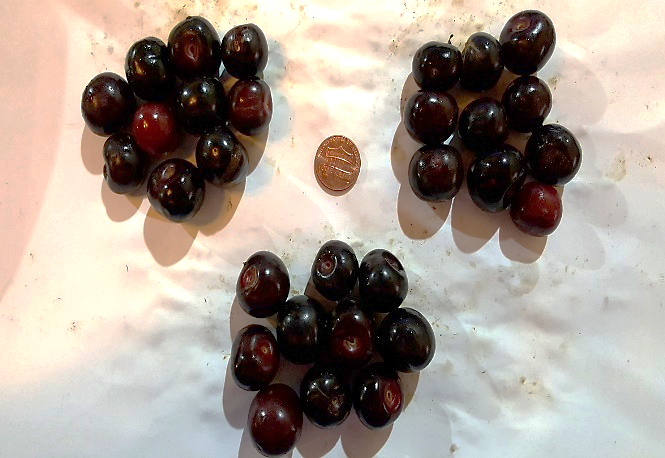A Novel Gene Short Internode Length In Gene in Peach
Peach [Prunus persica L. (Batsch)] is a diploid organism with a base chromosome number of 8 (2n=16). Several novel traits related to plant architecture have been reported in the peach. These include brachytic dwarfs (dwdw), compact(Ct_), semi dwarf, weeping(WE)(plpl), pillar (PI) (brbr), columnar and upright. All of these genes related to plant growth habit are recessive in nature. In our research, we discovered a new gene related to plant growth habit for short internode length In in peaches. This gene produces a phenotype that resembles the appearance of a peach brachytic dwarf with a standard growth habit. The presence of this gene causes a shorter internode length with overall high leaf density and thick plant canopy (Fig. 1). ‘AP07-20W’ is the first selection that was identified with short internode length phenotype (Fig. 2). No deleterious effect on fruit production in the trees has been seen as compared to trees with standard growth habit and standard internode length. Controlled crosses were made to study gene action and inheritance of short internode length gene. Also, research is underway for mapping of this short internode length gene In.


Morphological and Genetic Characterization of Prunus serotina subsp. capuli
Prunus serotina, commonly known as “black cherry”, is found in forests throughout the U.S. and its known for his high-quality wood. Its fruit is small with high astringency and is not used for human consumption. Prunus serotina is divided into 5 subsp.: P.serotina subsp. serotina, P. serotina subsp. eximia, P.serotina subsp. hirsuta, P.serotina subsp. virens and P.serotina subsp. capuli. Prunus serotina subsp. capuli commonly called capuli can be found throughout Central and South America in countries like Mexico, Ecuador, Peru, Guatemala etc. Best quality of capuli are found in high altitudes in the Ecuadorean Andes where fruits are used for human consumption (Fig. 1). Capuli are larger in size and tastier and juicier than N. American types. Capuli has important nutraceutical and medicinal properties which can be beneficial in the treatment of various important diseases like cancer, diabetes, and cardiovascular diseases. But no commercial varieties of capuli exist anywhere in the world.
Currently in Griffin, we have available approx. 1,300 plants representing 45 accessions collected throughout the Andes of Ecuador in 2016. The seeds from these accessions were brought to Georgia, germinated, grown and planted at the University of Georgia Peach Research and Extension Program – Dempsey Farm in Griffin, GA (Fig. 2). These accessions represent plants from three main provinces of Ecuador: Cotopaxi, Tungurahua and Chimborazo. In our research, we are characterizing phenotypic and genotypic variation of P. serotina subps. capuli collected from Ecuador. This includes studying morphological characteristics of capuli fruits and trees (Fig. 3), determining genome size of P.serotina subsp. capuli and studying genetic variation present among the collected accessions of capuli. This study will be an important first step towards the selection of valuable genotypes with commercial characteristics for future breeding projects.




